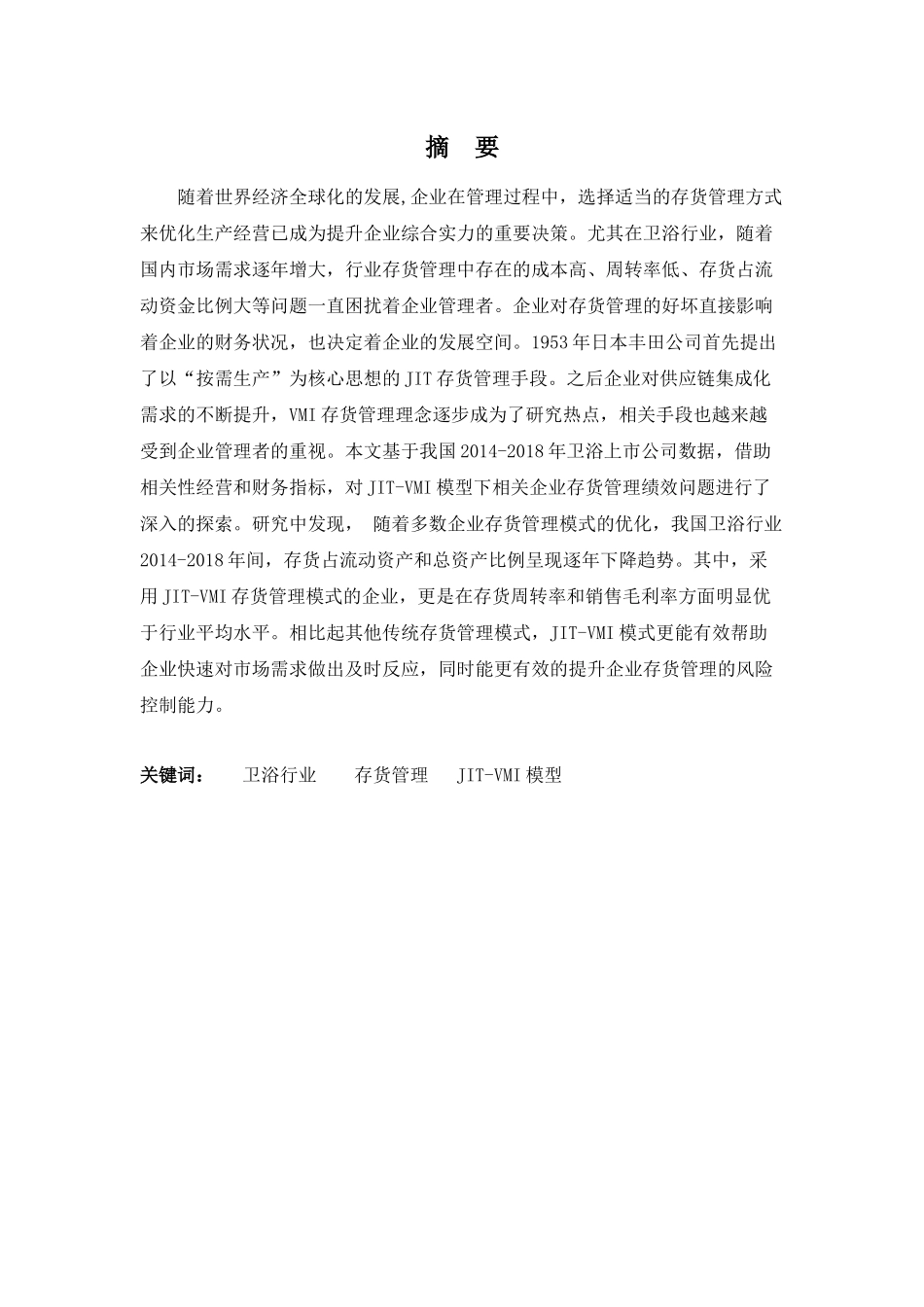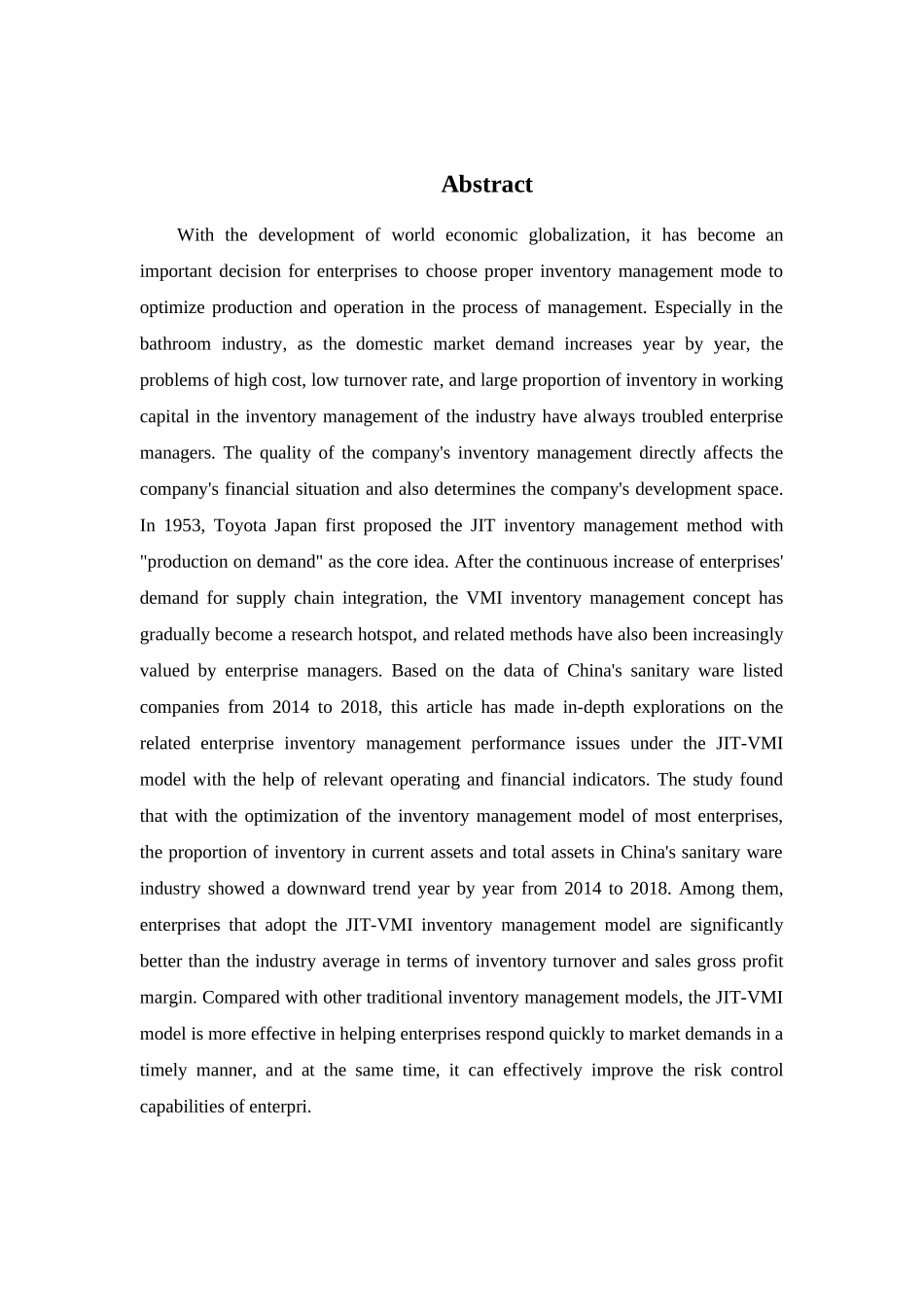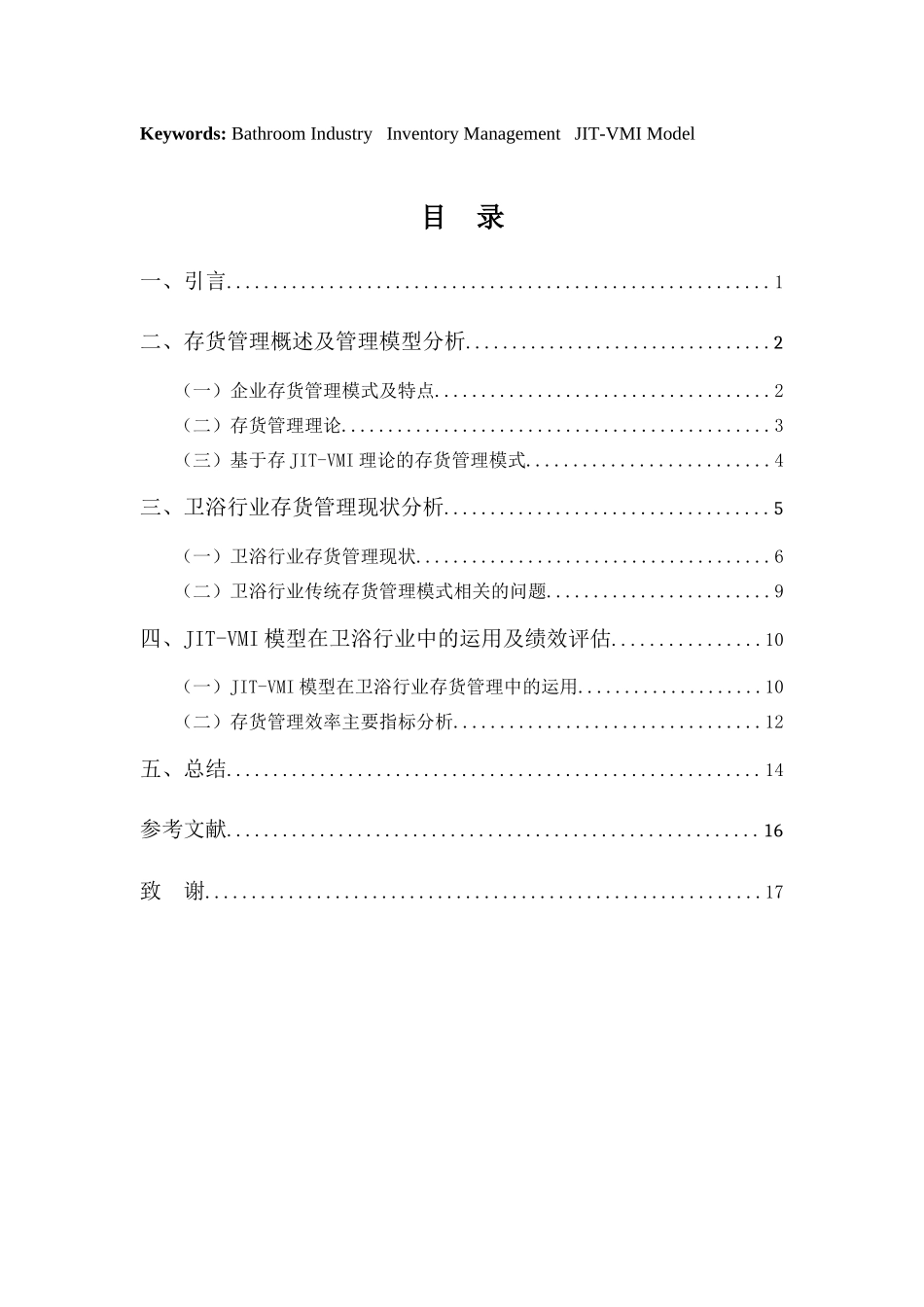摘 要随着世界经济全球化的发展,企业在管理过程中,选择适当的存货管理方式来优化生产经营已成为提升企业综合实力的重要决策。尤其在卫浴行业,随着国内市场需求逐年增大,行业存货管理中存在的成本高、周转率低、存货占流动资金比例大等问题一直困扰着企业管理者。企业对存货管理的好坏直接影响着企业的财务状况,也决定着企业的发展空间。1953 年日本丰田公司首先提出了以“按需生产”为核心思想的 JIT 存货管理手段。之后企业对供应链集成化需求的不断提升,VMI 存货管理理念逐步成为了研究热点,相关手段也越来越受到企业管理者的重视。本文基于我国 2014-2018 年卫浴上市公司数据,借助相关性经营和财务指标,对 JIT-VMI 模型下相关企业存货管理绩效问题进行了深入的探索。研究中发现, 随着多数企业存货管理模式的优化,我国卫浴行业2014-2018 年间,存货占流动资产和总资产比例呈现逐年下降趋势。其中,采用 JIT-VMI 存货管理模式的企业,更是在存货周转率和销售毛利率方面明显优于行业平均水平。相比起其他传统存货管理模式,JIT-VMI 模式更能有效帮助企业快速对市场需求做出及时反应,同时能更有效的提升企业存货管理的风险控制能力。关键词: 卫浴行业 存货管理 JIT-VMI 模型 Abstract With the development of world economic globalization, it has become an important decision for enterprises to choose proper inventory management mode to optimize production and operation in the process of management. Especially in the bathroom industry, as the domestic market demand increases year by year, the problems of high cost, low turnover rate, and large proportion of inventory in working capital in the inventory management of the industry have always troubled enterprise managers. The quality of the company's inventory management directly affects the company's financial situation and also determines the company's development space. In 1953, Toyota Japan first proposed the JIT inventory management method with "production on demand" as the core idea. After the continuous increase of enterprises' demand for supply chain i...












